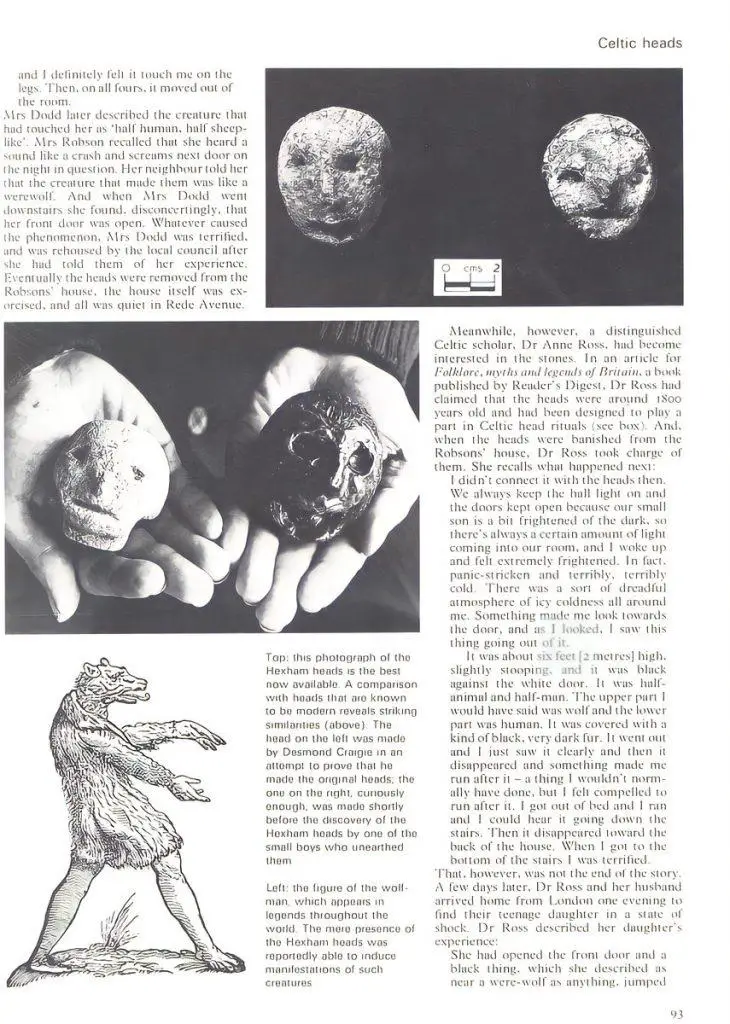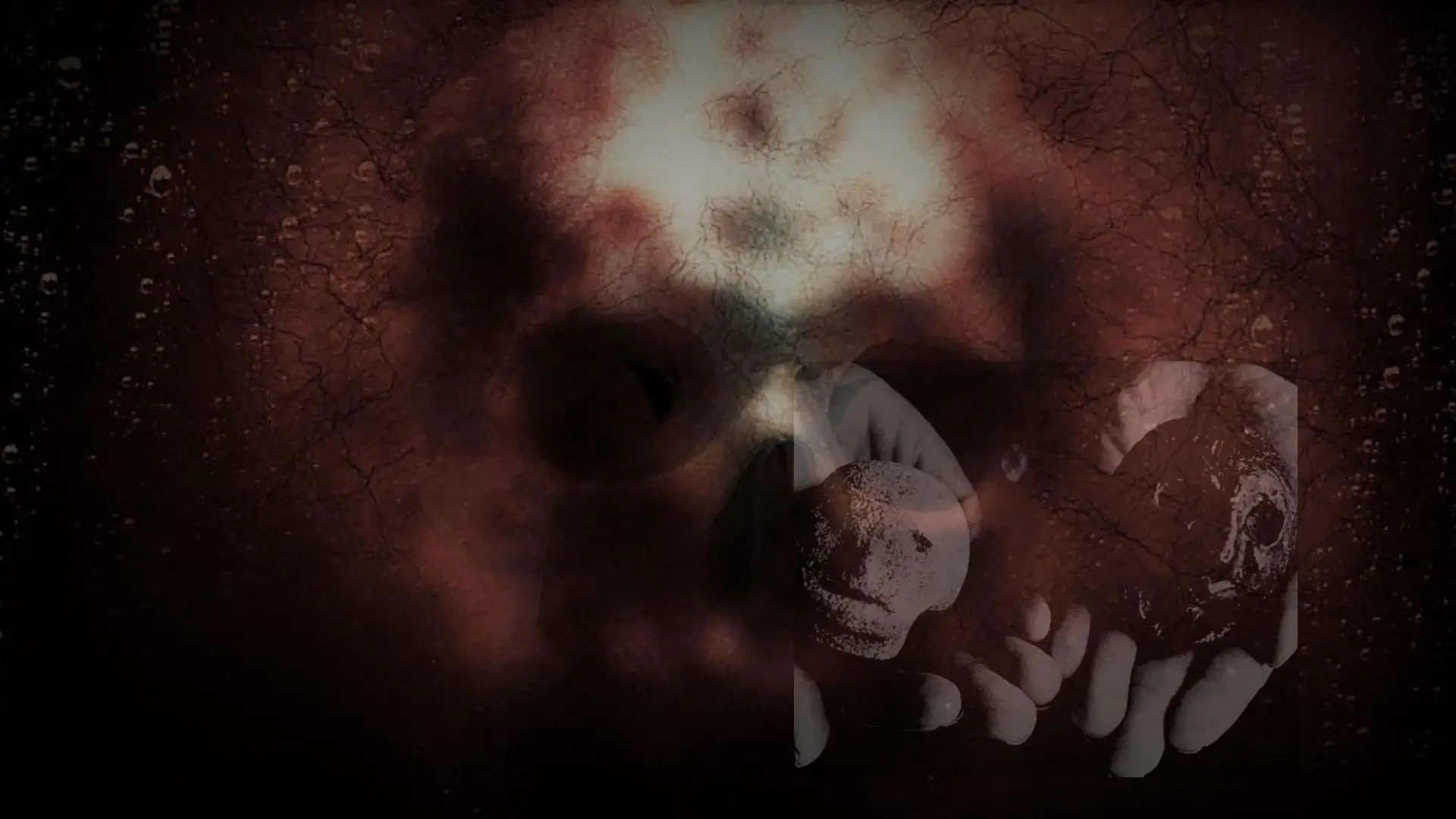Share the Lore!
By: Alex Postrado
Cursed Celtic Heads or Prank Gone Too Far?
In February of 1971, in the English town of Hexham, Northumberland, a pair of peculiar objects were unearthed by two young boys somewhere in the back garden of their home.
A pair of small, stone-carved heads — to be precise.
Both, of pale, greenish-gray color and appears to have quartz crystals in them.
Each was about the size of a tennis ball and fits almost perfectly inside someone’s palm.
The Hexham Heads — as they are known.
An accidental discovery that started out as nothing more than mere oddities, yet eventually turned into one of recent history’s most baffling anomalies.
The Discovery of the Hexham Heads
Ever since their uncovering in 1971, the Hexham Heads have been points of curiosity — not only for the haunting anecdotes that float around it but also for the questions regarding their real origins.
What most of us know is that in the garden of the Robson family’s 3 Rede Avenue home in Hexham, brothers Colin and Leslie found — what looks to be — two odd-looking stone carvings of heads.
Spherical in shape and with “stumpy little necks” — suggestive of them possibly being once connected to bodies or something else that is bigger — the objects immediately piqued the interest and excitement of the young boys.
This was what prompted them to bring the Heads inside their house to show to their family.
At first, they were all fascinated by the unusual discovery.
Unfortunately for them, it soon became objects of newfound fear when instances in their home began to turn increasingly eerie.
As they retreated to their upstairs bedrooms at night, poltergeist-like encounters started to manifest in the living room — the place where they left the Heads.
In the morning, the Robson’s awaken to the sight of the Heads in a different position from when they were last seen!
The chilling confusion quickly developed into abject fright when one dead of night, an “invisible hand” pulled the hair of one of the Robson boys, and shortly after, pieces of broken glass were found on top of their sisters’ bed.
It was nothing like they have ever experienced before!
Over the next days, they saw their TV automatically change frequency a couple of times.
And in their garden, “specifically where the heads were found“, a faint glow allegedly came out.
As a result, the Robson family reported the strange occurrences, unfortunately, to almost no avail.
It was only when their neighbors — the Dodd family — corroborated the phenomena and even revealed their own terrifying experiences that the accounts started to pick up steam.
Connection to the Hexham Wolf?
Nelly Dodd once claimed that closely after a paranormal encounter, she saw a “half-man, half-goat figure” about to leave their house.
This was the first time a somewhat physical entity — other than the Heads — was associated with the hauntings and the next was when the stones were transferred to Celtic Scholar Dr. Anne Ross’s custody.
According to Dr. Ross, one morning, she saw a monstrous figure walking out of their room.
This time, though, instead of a goat-like being, it was part-wolf and part-man!
She hurriedly followed it into the kitchen and found that it had seemingly vanished.
After a few days, the same entity was seen by her daughter, Berenice, and just like before, it mysteriously disappeared.
Dr. Ross believed that the werewolf-like creature that they saw was possibly linked to the notorious Hexham Wolf of 1904 and may even be the exact same wolf!
In the winter of 1904, flocks of sheep were slaughtered out of nowhere — once again in Hexham, along with its neighboring town of Allendale — by what people alleged was a large gray wolf.
The Northumberland public was rattled by the news, and soon, hunts for the Hexham Wolf went about.
In the end, all of their leads were crossed out and when the interest of the masses waned, the infamous Wolf of Hexham was left at large — at least, until the Ross family’s werewolf sighting claims in the 70s.
Theories on the Hexham Heads Mystery
As stated by Dr. Ross, the eerie incidents at their home only ceased when she got rid of both of the Hexham Heads.
But, during her possession of them, she came to a conclusion that the stones were actually Celtic carved heads, dating back to the Iron Age.
She shared this idea on national television and even incorporated her studies on the Heads when she co-authored an edition of Archaeologia Aeliana — focusing on her background in Celtic history, religion, and folklore.
According to her, carved heads had quite a significance in Celtic history.
In fact, the Corleck Hill stone head from the Early Iron Age — somewhere between the 1st and 2nd century CE — remains one of the best known Celtic carved heads of antiquity till today.
And that was what further solidified Dr. Ross’s belief that the Hexham Heads were indeed ancient Celtic artifacts.
But, along with it, she also believed that the carvings were “evil” and might even be a part of a death cult of some kind, at one point in the past.
Of course, that was heavily criticized by other experts — especially people of science.
They argued that the supposed werewolf encounter was not something that can be studied — much less, proven.

And the fact that an archeologist would relate the supernatural with the real and tangible — such as the Heads — is quite flippant.
Was it All a Prank?
In 1974, town local Desmond Craigie said that he finds it funny how people have made such a huge deal out of two carved heads, which he asserted he incidentally made to amuse his daughter back in 1956 — when they occupied the very property where the Hexham Heads were discovered by the Robsons.
He claimed he created them “from bits of stone and mortar“.
And as it happened, Craigie’s daughter had left the Heads buried in the garden for the years leading up to 1971.
When Dr. Ross challenged the man to prove it, Craigie made a couple more heads to push through with his claim — or prank, as some like to put it.
However, none of his new creations matched any of the original Heads.
Around that same year, Sunday People published an article about the Hexham Heads, along with a few pictures — titled, “Myth of the ‘Evil’ Heads”.
This furthered the public’s interest in the curiosities.
And experts from all over the place grew more and more intrigued to render their own studies on the mysterious Heads.
University of Newcastle Professor Dearman was among the lucky few to have analyzed the original Hexham Heads in which he found that the items had actually been “molded artificially rather than carved” — strengthening Craigie’s claim to some extent.
But, the problem is that due to the Heads having no organic traces, they could not be carbon-dated in order to have a considerably precise origin date.
Assuming that it can — for some reason — still be carbon-dated though, after years of being passed down from one scholar to another, the Heads and whoever they were last given to seemed to have faded into thin air — with their whereabouts, unknown even to this day.
A mystery that apparently wants to remain a mystery — what do you think happened to the strange Hexham Heads?
References:
The Hexham Heads The Mystery Of The Hexham Heads The Hexham Heads - Astonishing Legends The Sinister Story Of The Hexham Heads
